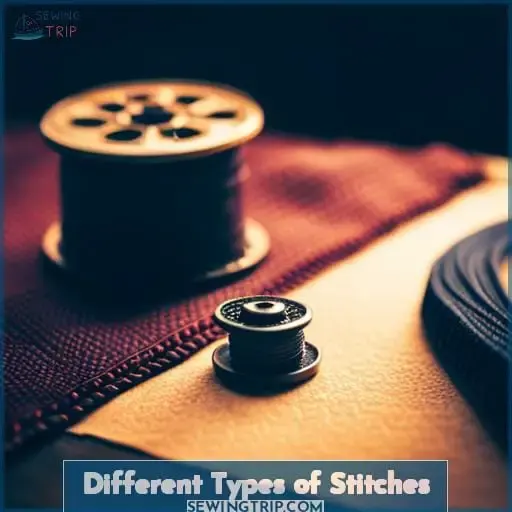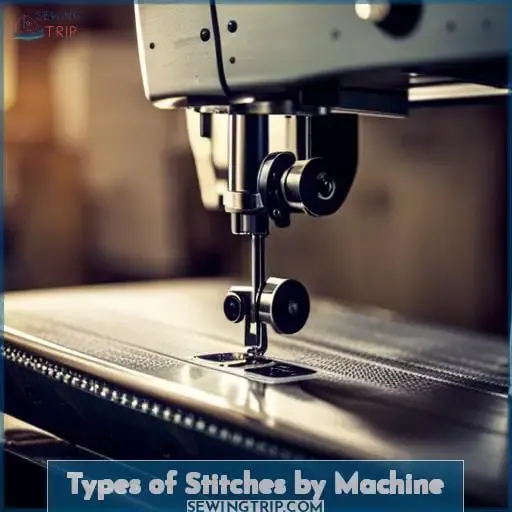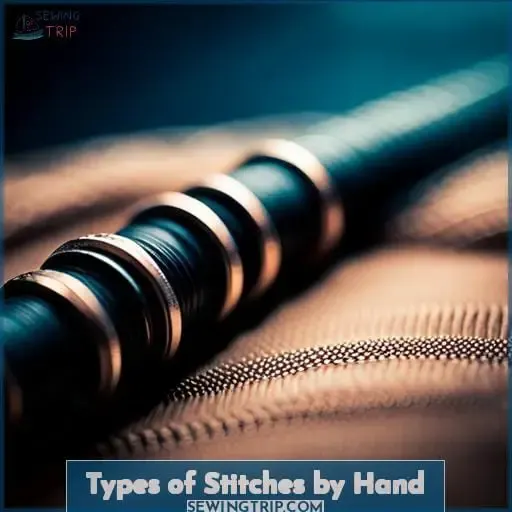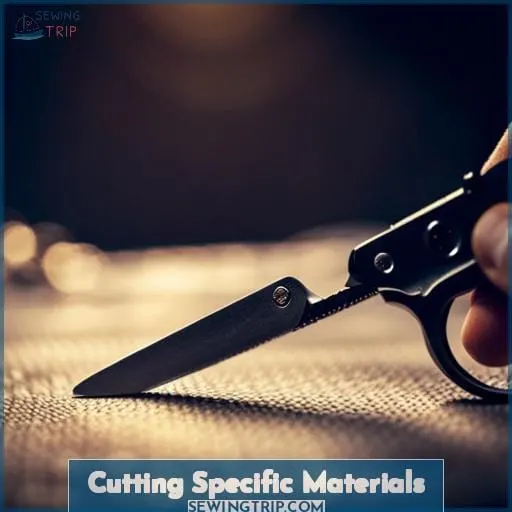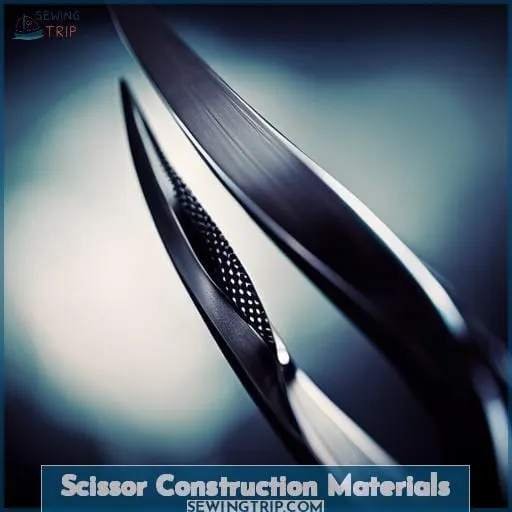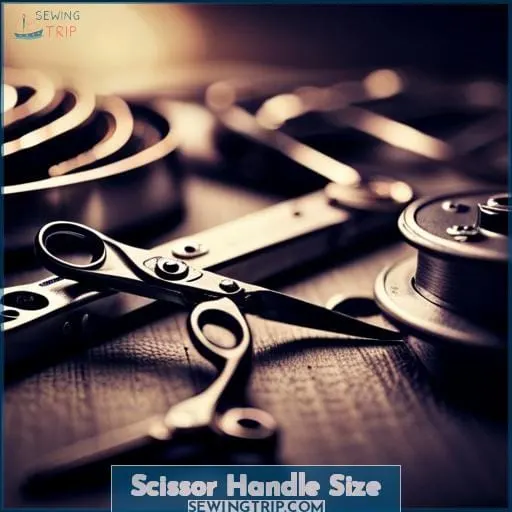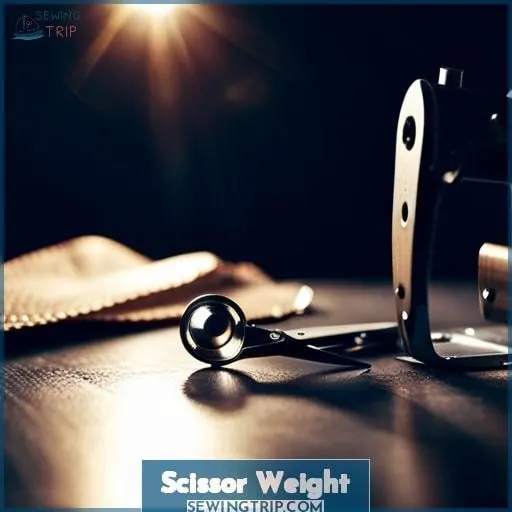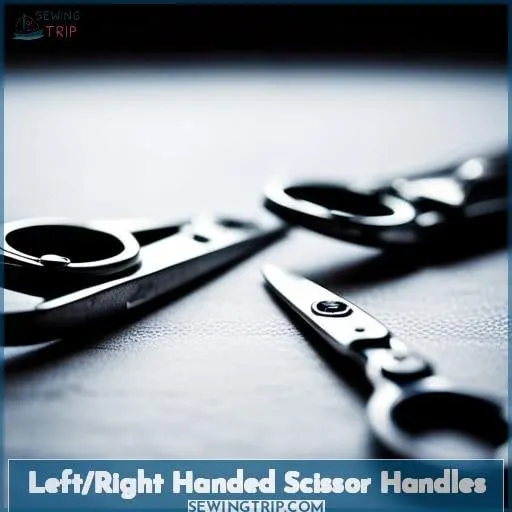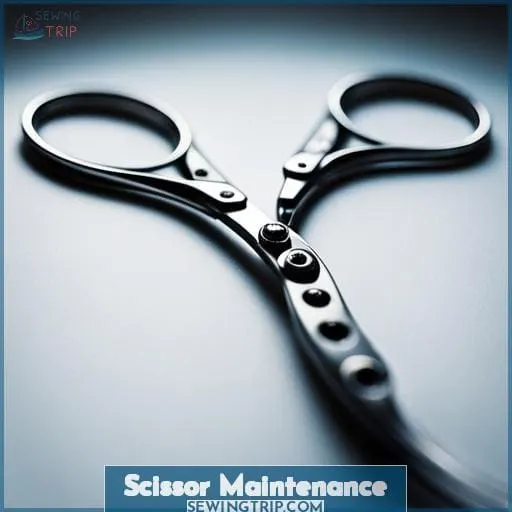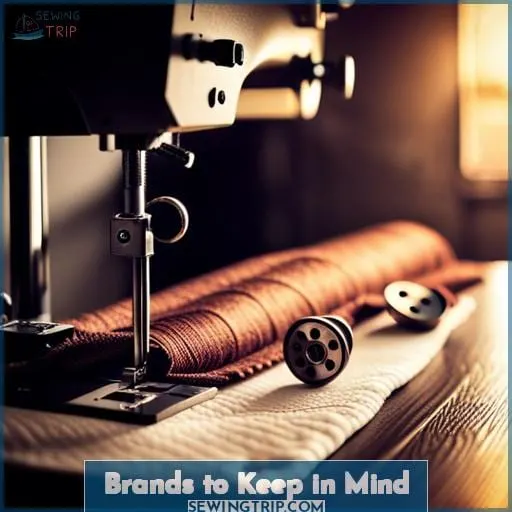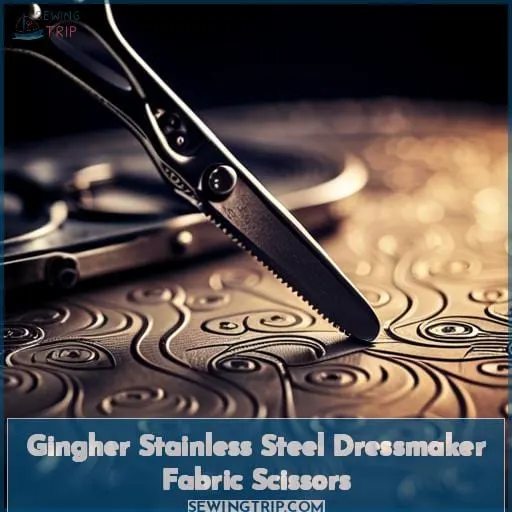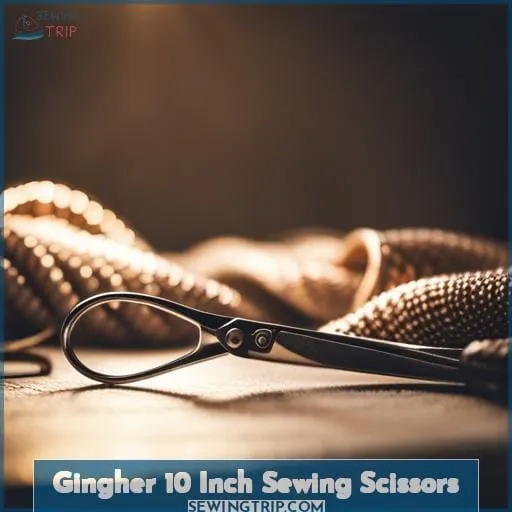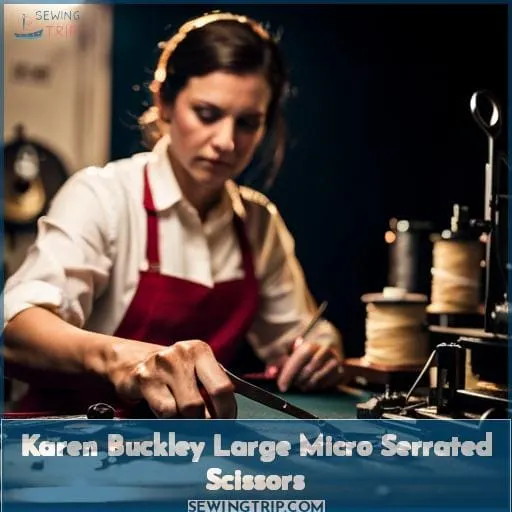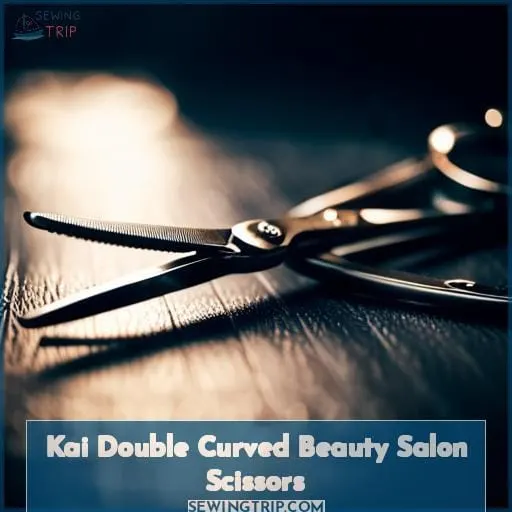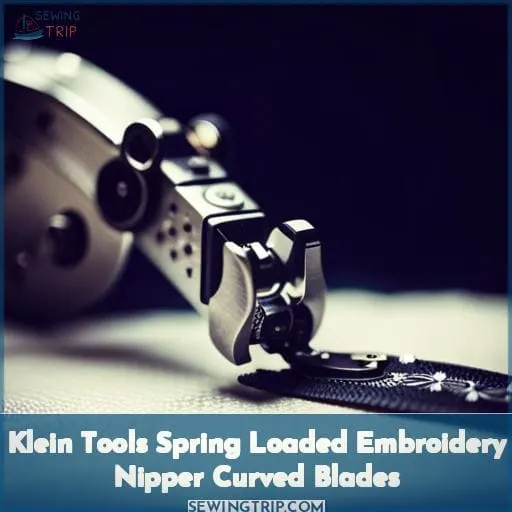This site is supported by our readers. We may earn a commission, at no cost to you, if you purchase through links.
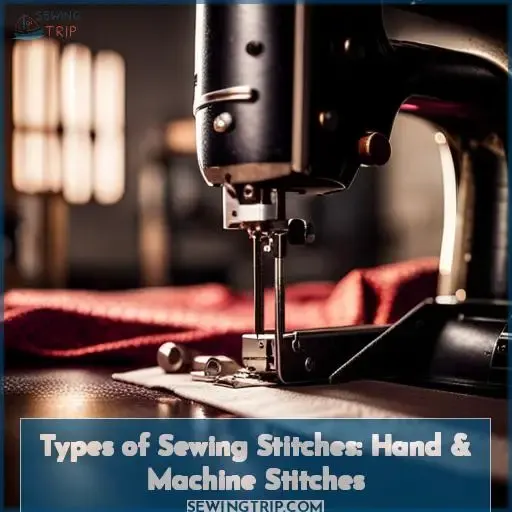 Fabric and thread, scissors and machine – these are the tools of a great seamstress. But what about all those different types of sewing stitches? From hand to machine, from straight stitch to chevron stitch, it’s important to know which type is best for each project.
Fabric and thread, scissors and machine – these are the tools of a great seamstress. But what about all those different types of sewing stitches? From hand to machine, from straight stitch to chevron stitch, it’s important to know which type is best for each project.
It can be intimidating if you’re just starting out in the world of sewing but don’t worry – we’ve got you covered! In this article, we’ll discuss all the different types of stitching techniques that every sewist should have in their toolbox so that they can create beautiful pieces with confidence.
So let’s dive into understanding what each type has to offer and how they work!
Table Of Contents
- Key Takeaways
- Different Types of Stitches
- Types of Stitches by Machine
- Types of Stitches by Hand
- Types of Scissors/Shears You Will Likely Find in a Sewing Room or Art Studio
- Popular Features of Scissors to Keep in Mind While Shopping
- Cutting Specific Materials
- Scissor Construction Materials
- Scissor Blades
- Scissor Handle Size
- Scissor Weight
- Left/Right Handed Scissor Handles
- Scissor Maintenance
- Brands to Keep in Mind
- Gingher Stainless Steel Dressmaker Fabric Scissors
- Gingher 10 Inch Sewing Scissors
- Karen Buckley Large Micro Serrated Scissors
- Kai Double Curved Beauty Salon Scissors
- Klein Tools Spring Loaded Embroidery Nipper Curved Blades
- Conclusion
Key Takeaways
- Hand sewing stitches include backstitch, running stitch, chain stitch, and whip stitch.
- Machine stitches include straight stitch, zigzag stitch, blind hem stitch, and buttonhole stitches.
- Understanding different stitches is crucial for various sewing projects and offers versatility.
- Scissors are an essential tool for sewing, and there are various types and considerations for selecting the right pair.
Different Types of Stitches
Hand stitches and machine stitches – you’ll want to get familiar with both. While hand stitches allow for more control in delicate work, machine stitches speed up construction, so mastering a variety comes in handy whether you’re sewing by hand or machine.
Hand Stitches
You will encounter an extensive variety of hand stitches as you craft! Consider backstitch for outlining shapes and seams that require strength. Try running stitch for gathering fabric or quilting. Experiment with chain stitch for a looped look that is lovely on embroidery.
Whip stitch secures edges neatly. Blanket stitch finishes raw edges attractively. Select quality scissors like Gingher shears for clean cuts. Match your stitch to the fabric and project.
Machine Stitches
There are basic types like straight stitch, zigzag stitch, blind hem stitch, and buttonhole for the everyday sewer. After mastering those, explore interesting variations by adjusting stitch width, length, and tension.
Try multi-step zigzag for stretchy seams or three-step zigzag for appliqué edges. Play with decorative stitches like faggoting or smocking for unique embellishments. With practice, you’ll unlock your machine’s full potential. Experiment with different stitch settings and techniques to bring your projects to the next level.
Types of Stitches by Machine
Sewing machines open up a world of stitch possibilities beyond hand sewing. Let’s explore the most common machine stitch types used for garment construction and decorative effects – the versatile straight stitch, zigzag stitch, overcast stitch, buttonhole stitches, and the blind hem stitch.
Straight Stitch Types
Here you go, this fashionista can’t live without the trusty straight stitch for constructing garments! I frequently rely on its versatility for seams, hems, and topstitching when making couture creations.
This basic stitch is the foundation of quality dressmaking, darlings. Use zigzag versatility for stretch fabrics, buttonhole techniques for closures, and hand embroidery for embellishment. Consider scissor selection for perfect cuts, and stitch maintenance for sewing success.
Zigzag Stitching
Zigzagging adds decorative texture and prevents fraying. Adjust your machine’s stitch width for wider or closer zigzags. Get creative with zigzag patterns! Unlike the straight stitch, the zigzag flexes with fabric and neatly finishes seams.
Overcast Stitch
Overcast your edges to prevent fraying, my friend. Prevent seam elongation by maintaining even spacing and length in your overcast stitches. Choose a fine thread to seamlessly blend with the overcast stitching. Use specialty feet to finish inside curves and edges.
Add variation to your overcast stitch width for decorative purposes. It elegantly secures fabric edges.
Buttonhole Stitch Types
Don’t postpone that buttonhole; get straight to it to button up your creative side. Explore buttonhole stitch variations to embellish your sewing projects. Move beyond basic rectangular holes with creative shapes and decorative accents.
Master buttonhole stitch techniques like fleur-de-lis, keyhole, and heart-shaped buttonholes. Use the buttonhole stitch for more than just button closures. Unleash your imagination to make buttonhole designs a purposeful part of your garment.
Embrace the versatile buttonhole stitch to fasten, reinforce, and decorate your sewing creations.
Blind Hem Stitch
You’ll love the blind hem stitch for hemming pants and skirts invisibly.
- Ideal for inconspicuous hemming.
- Adds an invisible finish to garment edges.
- Creates a nearly invisible hem from the right side.
- Works on straight or curved edges.
- Great for formalwear requiring sleek hems.
The blind hem stitch creates an invisible finish along hemlines for a polished, professional look. Experiment with your sewing machine‘s settings to master this useful and discreet stitch.
Types of Stitches by Hand
Let’s start with the basics of hand sewing stitches. The backstitch creates a solid line for seams, while the blanket stitch finishes fabric edges. Then we’ll move on to the catch stitch for hemming, the chain stitch for outlines, and the chevron stitch to decorate projects.
Backstitch
Wouldn’t backstitching give your hand-sewing project extra strength? Secure hems and seams with precise backstitching. Vary stitch lengths for optimal results. Try backstitching curves. Practice on scrap fabric first.
Blanket Stitching
The blanket stitch creates finished edges on fabrics and joins applique pieces to projects in hand sewing. There is doubt about whether it truly originated from binding blankets or if that’s just a cute name.
The blanket stitch weaves magic, finishing fabric edges or attaching appliques with flair. Try varying stitch lengths for textured effects. Embellish handmade gifts with personalized flair using variations of the blanket stitch.
Catch Stitch
You catch and lock the fabric with this subtle hand stitch. Use small, neat catch stitches on hems, seams, patches, and facings. Catch stitching is great for invisible hemming without machine stitching. Unlike more visible hem stitches, the catch stitch creates an inconspicuous hand-sewn look.
Chain Stitch Types
Link stitches with loops to form a chain when hand sewing for ornamental edging or flexible joins. Vary chain stitch sizes and spacing for unique embroidery effects. Combine with chevron or lazy daisy stitches on clothes and quilts.
Select quality shears like Fiskars tailor shears for clean cuts. Adjust machine stitch length for durable seams and creative looks.
Chevron Stitch
Wow, the captivating chevron stitch creates stylish zigzags for embellishing fabric masterpieces! Experiment with variations like alternating colors or stitch widths for dazzling textures. Its versatility allows for endless creative possibilities, from decorating garments to embellishing quilts.
Types of Scissors/Shears You Will Likely Find in a Sewing Room or Art Studio
Being equipped with the right selection of sewing shears is crucial for any sewing space. You’ll need dressmaker shears for clean fabric cuts, tailor shears for cutting multiple layers, pinking shears to prevent fraying, small fabric scissors for detail work, and embroidery scissors for cutting tiny threads.
Dress Maker Shears
Gingher’s sharp, high-quality dressmaker shears are perfect for precise cutting of patterns and fabric. The stainless steel blades effortlessly slice through multiple layers of fabric. The ambidextrous handles ensure comfort during use. A protective sheath is included.
The precision and durability of these shears are backed by a lifetime warranty. Compare different models based on blade length, handle size, and weight to find the perfect fit for your hand.
Tailor Shears
You’ll want good-quality tailor shears for cutting through multiple layers of denim or other heavy fabrics when making jeans or tailored jackets. Sturdy blades resist twisting and withstand the force needed, while long blades provide the leverage to make smooth cuts without excessive hand strain.
Invest in tailor shears with high-carbon steel alloy blades that remain sharp through repeated use on heavy fabrics. Brands like Gingher or Kai offer excellent tailor shears. Proper care will maintain performance.
Pinking Shears
You wouldn’t live without those pinking shears in your toolbox for preventing frayed fabric edges on your sewing projects! Cut pattern pieces and finished edges perfectly with sharp, zigzagging pinking shears.
Ginghers last for decades with proper care – blades oiled and stored safely. Fiskars budget pairs work too.
Small Fabric Scissors
Break Out the Microscopic Fabric Scissors for Nano-level Precision Guaranteed!
- Easily clip minute threads.
- Make precise cuts in tight spots.
- Trim tiny appliqués or embroidery.
- Curve around delicate seams.
With their tiny size and sharp blades, micro fabric scissors empower meticulous craftsmanship, ensuring extraordinary results.
Embroidery Scissors
Embroidery snips allow you to trim tiny threads and handle detailed work! Choosing sharp embroidery scissors enhances your stitching speed. Kai’s curved blades excel at intricate cuts, while the soft handles provide comfort during long craft sessions.
Popular Features of Scissors to Keep in Mind While Shopping
Different size handles contribute to comfort and control when cutting. Selecting the right scissors for your hand size and dexterity helps improve cutting precision, speed, and avoid hand fatigue.
Some key considerations when shopping for scissors include:
- Handle design and size: Ergonomic, cushioned handles in different lengths fit various hand sizes. Longer handles allow more leverage for cutting, while shorter handles provide more control.
- Blade weight: Lightweight scissors reduce strain, while heavier blades add cutting power.
- Ambidextrous: Scissors with symmetric handles suit both left and right-handed crafters.
- Safety: Blunt tip kid scissors or covers on blades prevent accidents. Proper storage in sheaths or boxes when not in use is crucial.
Proper scissor maintenance keeps your tools sharp and functioning smoothly. Take time selecting scissors that match your needs and keep safety in mind.
Cutting Specific Materials
When selecting scissors, consider the unique properties of each material you’ll be cutting. For example, choose short blade scissors for cutting ribbons and trim. Use long blades for cutting fabric along the grain.
Select serrated blades for slippery fabrics like silk or satin that tend to move around.
Material: Fabrics
Recommended Scissors: Sharp, stainless steel shears
Technique Tips: Keep blades sharp for clean cuts
Material: Paper
Recommended Scissors: Paper scissors with shorter blades
Technique Tips: Curl paper when cutting to prevent tearing
Material: Thread/String
Recommended Scissors: Small snips or nippers
Technique Tips: Avoid fraying by cutting close to the material
Material: Leather/Vinyl
Recommended Scissors: Sturdy shears
Technique Tips: Cut in single continuous strokes
The right scissor for each material, along with proper cutting technique, ensures neatness and precision.
Scissor Construction Materials
Your vision blurs and muscles strain when you’ve been squinting at slippery fabric too long, don’t just reach for any old snippers lying around. Quality scissors invite creative flow. Titanium scissor blades keep their edge yet remain lightweight, making precise cuts effortless.
Carbon steel offers strength and sharpness but requires oiling to prevent rust. Stainless steel resists corrosion and is easy to clean but may need frequent sharpening. Handles of wood or plastic provide a sure grip – cushioned designs prevent hand cramps.
Well-constructed shears feel like extensions of your hands, snipping fabric cleanly to bring visions to life. Treat them with care by wiping blades after use and storing in sheaths to prevent nicks. Brands like Gingher or Kai indicate superb construction. With the right scissors, creative energy flows seamlessly from mind to material.
Scissor Blades
You’ll want sharp scissor blades for smooth, clean cuts through fabric. Opt for high-quality steel blades that feel substantial and make a nice crisp snip when tested. Serrated scissor blades grip fabric to prevent fraying – perfect for cutting knits or along seams.
Stay on top of blade maintenance by wiping clean after each use and having them sharpened annually. Choose scissor handles that fit your dominant hand, with larger handles for more leverage and control in precision cutting.
For detailed embroidery work, use micro-tip nippers that allow flush trimming around appliqués or embedded jewels – their precision is unmatched. With the right scissor blades for your project, you’ll achieve the clean results your creative vision demands.
Scissor Handle Size
Choose scissors with handle sizes that fit your hand for comfort and control when cutting fabric.
Look for contoured or cushioned handles that mold to your grip.
Handles sized for petite, medium, or large hands help maximize control.
Avoid heavy handles that cause hand fatigue during prolonged cutting.
Test scissors to ensure the handle size feels right before buying.
Scissors with thicker, rubberized handles provide a secure grip, especially for sweaty hands.
The right scissor handle size allows for precise, effortless cutting. If your hands cramp or slip, it’s time to try a different handle design that fits your hand size and needs. With the proper grip, you’ll have the control needed for accurate cuts and stitches.
Scissor Weight
When choosing sewing scissors, consider the weight and feel in your hand. Heavier scissors can provide more leverage and power for cutting thicker fabrics, but lightweight scissors allow for more control and precision on delicate materials like silk.
Test out a few pairs to find the right weight for comfort during extended sewing sessions. Forged steel blades tend to be heavier, while titanium or aluminum handles are lighter. Scissors with thick cushioned grips can also make them feel heavier. Make sure the weight doesn’t cause hand or wrist strain.
Maintain sharp blades for easier cutting regardless of weight. Dull blades require more force. Overall, find scissors with a weight that suits the fabrics you commonly work with.
Left/Right Handed Scissor Handles
Using left or right-handed scissor handles lets you cut comfortably for hours. When shopping for sewing scissors, be sure to consider your dominant hand so you can select ergonomic handles specifically designed for lefties or righties.
Getting the right handles tailored to your grip preference allows you to properly position your thumb and fingers for optimal control and cutting power.
Don’t settle for straining with non-ideal handles – investing in ambidextrous or handed scissor designs will take your projects to the next level.
Handle size, finger indentations, and grip angles all factor into a scissor’s cutting comfort, so test scissor handling to find your perfect match. The right handles unlock your cutting potential, giving you the liberation to snip and slice your fabrics with mastery and precision.
Scissor Maintenance
You’ve noticed your best dressmaking shears are dulling. Oiling those blades regularly preserves their keen edge for flawless cuts.
Don’t despair, my dear! A little TLC keeps your shears slicing strong. Start by wiping down the blades gently with a soft cloth.
Carefully run a drop of light sewing machine oil along the blades, then massage it into the metal with a soft cloth.
For extra care, use a fine sharpening stone. Gently hone each blade at a 20-degree angle, taking care to sharpen both sides evenly.
Your shears will reward you with clean, accurate cuts once more. With regular oiling and the occasional sharpening, your trusty shears will snip through fabric like new for years of creative sewing ahead!
Brands to Keep in Mind
You’ll want quality brands like Gingher and Kai for projects requiring precision. When selecting sewing shears, opt for reputable brands known for high-quality construction. Gingher’s German-made scissors feature superbly sharp stainless steel blades that glide through fabric.
Kai scissors offer similar professional-grade Japanese steel blades and comfortable handles for extended use. Either provides the longevity and accuracy needed for flawless garment construction.
Beyond straight shears, seek specialty scissors like Kai’s appliqué snips or Gingher’s curved embroidery scissors. With the right tools, you can achieve those delicate cuts and details that elevate your work.
Invest in shears that feel natural and empower your skills. Master proper scissor care to keep them slicing smoothly. Then explore those finessed seams, precise notches, and perfect buttonholes that precision instruments make possible.
Gingher Stainless Steel Dressmaker Fabric Scissors
Have an eye fixed on Gingher’s premium stainless steel dressmaker scissors for accurate fabric cutting.
With precision-ground, knife-edge blades, they glide through fabric with ease. No matter how delicate or thick your material, these ambidextrous scissors will cut it cleanly.
Their chrome-over-nickel finish ensures long-lasting durability despite daily use. The bent handles provide comfort, reducing hand strain during lengthy sewing projects.
Proper scissor care is key: clean blades after use, oil joints periodically, and avoid cutting paper that can dull edges. When treated right, Gingher scissors become lifelong companions, ready to snip any fabric imaginable.
Tackle sewing projects with confidence, wielding sharp, dependable shears from a brand that’s stood the test of time.
Gingher 10 Inch Sewing Scissors
Cut sturdy fabrics with precision using Gingher’s durable 10-inch sewing scissors. These classic scissors are designed for industrial strength cutting and feature chrome-plated blades that slice through heavy fabrics like canvas, leather, and upholstery with ease.
I recommend these scissors for ambitious sewing projects using sturdy materials. Proper scissor care will keep the blades sharp. To maintain their sharpness, avoid cutting paper, as it can dull the edges. For cleaning, use a small piece of leather to swipe the blades.
Additionally, applying light oil occasionally will help prevent rust. To protect the tips, store the scissors in a sheath or scissor case.
Quality tools like these scissors empower your creative potential. With practice, you will gain mastery over difficult materials. The right scissors become an extension of your own hands. Let Gingher open new possibilities for your boldest sewing endeavors yet.
Karen Buckley Large Micro Serrated Scissors
From the Gingher heavy-duty scissors, let’s shift our attention to the Karen Buckley Large Micro Serrated Scissors. These scissors will become your trusted companions in achieving perfect fabric cuts, thanks to their sharp, serrated blades.
The micro-serrated edge provides an unshakeable grip on your fabric, preventing it from shifting or fraying while cutting. Gain immense control over your work with the soft, comfortable handles that smoothly guide the blades.
Both right and left-handed crafters can utilize these versatile scissors, thanks to the well-designed ambidextrous handles. Quilters highly praise the sharp cutting ability and accuracy achieved with every snip.
While some have concerns over long-term handle durability with extremely heavy use, occasional oiling goes a long way.
Ultimately, the Karen Buckley Micro Serrated Scissors deliver precision and mastery for all your sewing and crafting needs.
Kai Double Curved Beauty Salon Scissors
With its 1.25-inch blades curved for precision, you’ll love trimming threads and tight spots with the Kai beauty salon scissors.
- Hardened stainless steel with vanadium blades stay ultra-sharp.
- Ambidextrous bent handles offer comfortable control.
- Curved blades access tight spaces easily.
- Polished finish provides smooth cutting action.
Avoid soaking scissors to prevent corrosion of joints. Use a damp cloth to remove debris and lubricate with mineral oil if needed.
Compared to brands like Gingher and Fiskars, Kai delivers exceptional sharpness and accuracy for detailed crafting. With practice, their precise tips give you mastery for flawless appliqué and embroidery.
Add these nimble, professional shears to your quilting toolkit.
Klein Tools Spring Loaded Embroidery Nipper Curved Blades
Patiently, you guide the spring-loaded nipper’s curved blades through each delicate stitch as if untangling fine threads from Grandmother’s antique doily. As a sewing instructor, I often recommend the Klein Tools Spring Loaded Embroidery Nipper to my advanced students.
It’s become a crafter’s favorite for its precision cutting ability in tight spaces.
The nipper’s auto-return action, combined with its micro-sharp tips, allows for flush cutting close to fabric without damaging your project. No more fumbling with scissors or risking clumsy cuts on intricate designs! With practice, the spring-loaded nipper becomes an extension of your hand, snipping tiny threads effortlessly.
Embroidery, quilting, applique work – this nimble tool excels at detailed crafts. Its plastic handles and lightweight feel give you full control. So treat yourself to the Klein nipper – your new embroidery sidekick awaits.
Conclusion
With 35 types of stitches for hand and machine sewing projects, it’s no surprise that sewing is a craft that offers endless possibilities! Whether you’re a beginner or a professional, having the right tools for the job is essential.
From dressmaker shears to embroidery scissors, there is a wide selection of scissors and shears to choose from to ensure you get the perfect cut for your project. With the right scissors and knowledge, you can get the perfect stitch every time.

